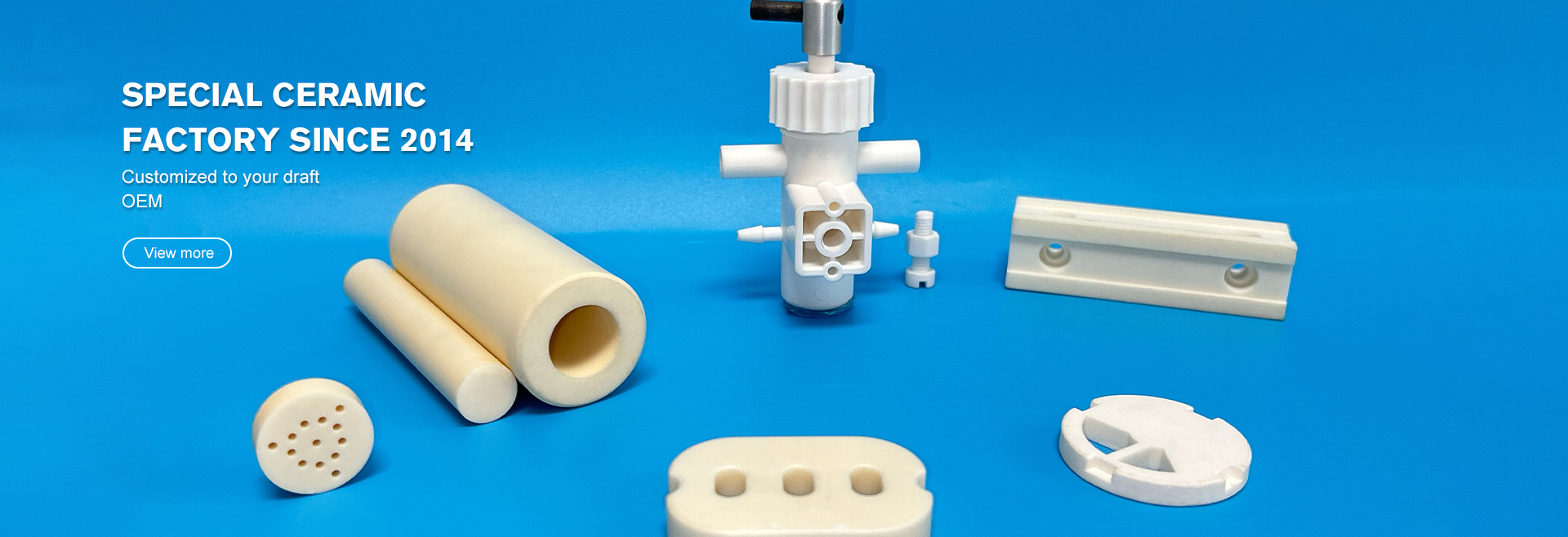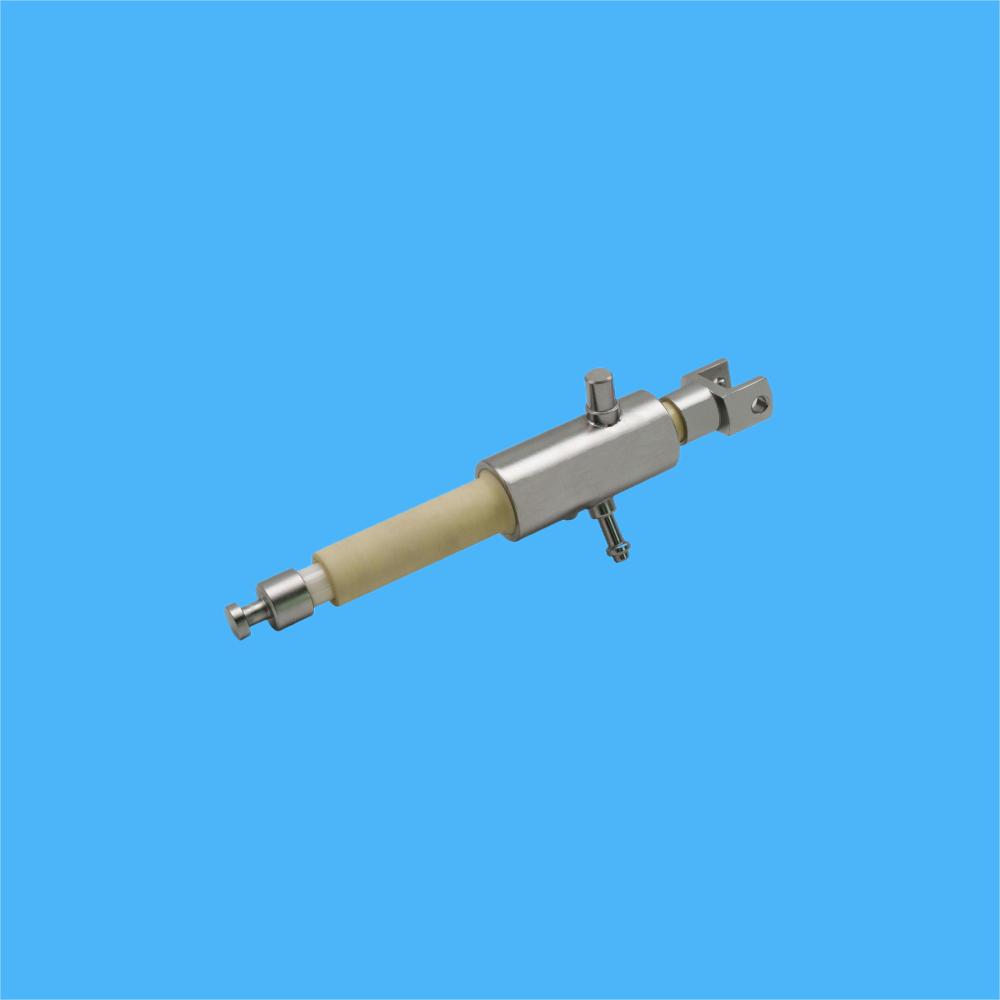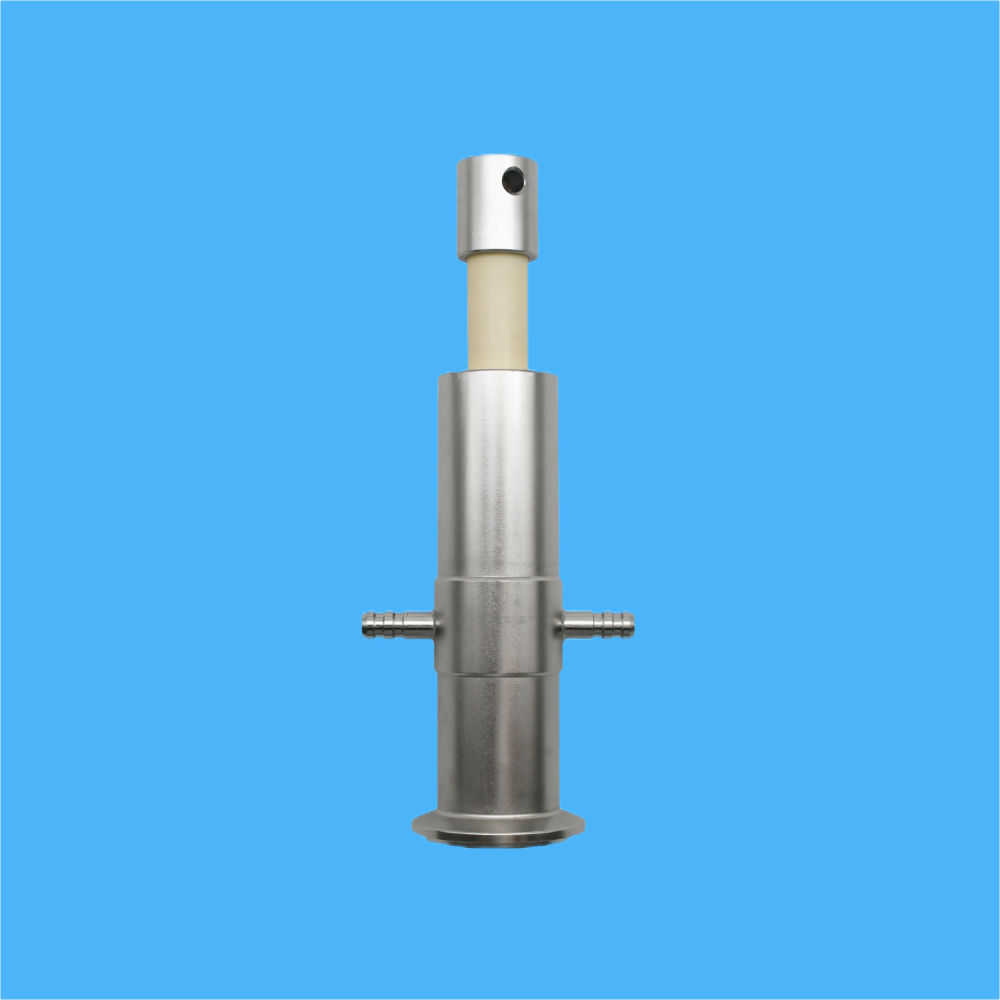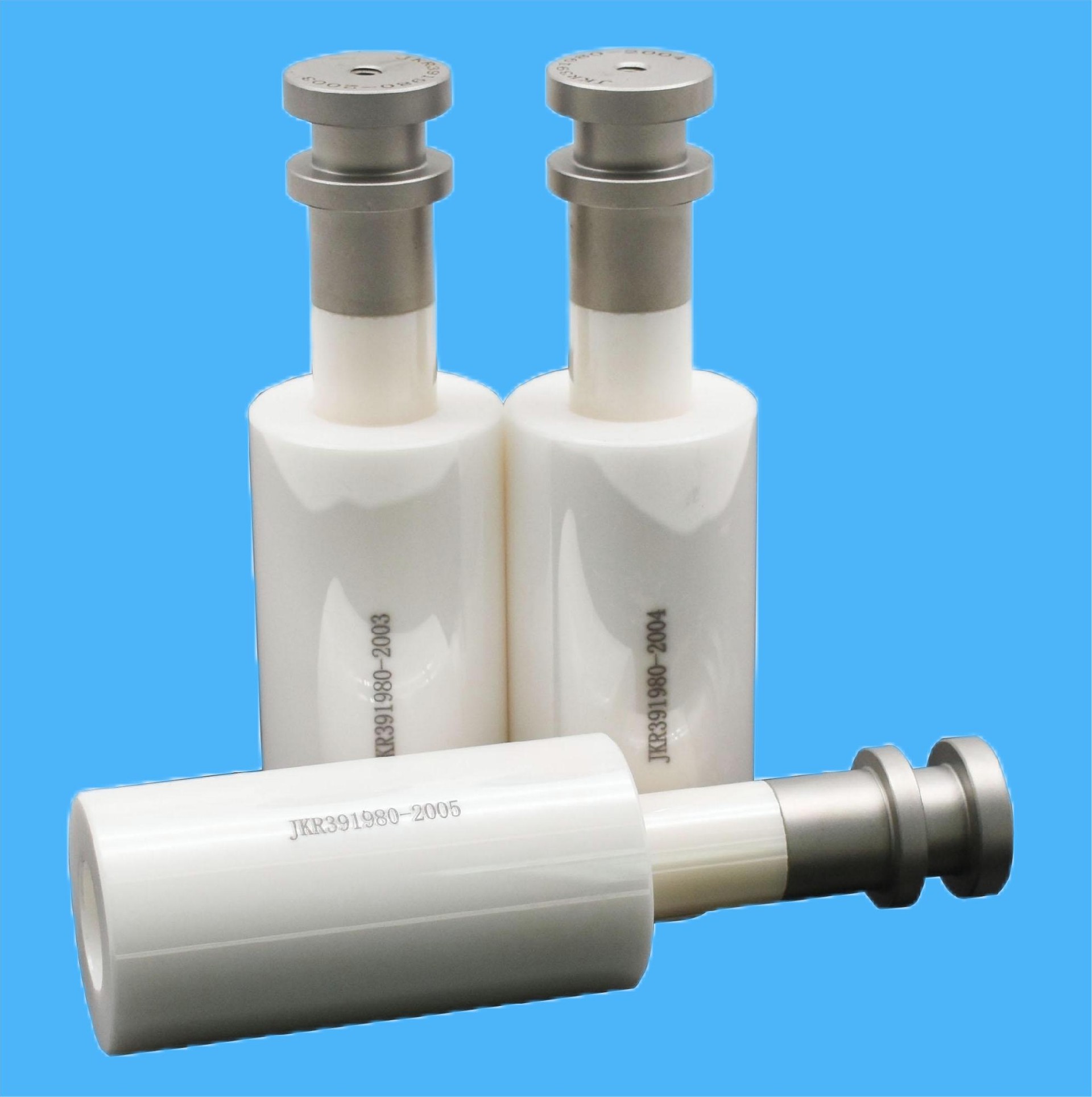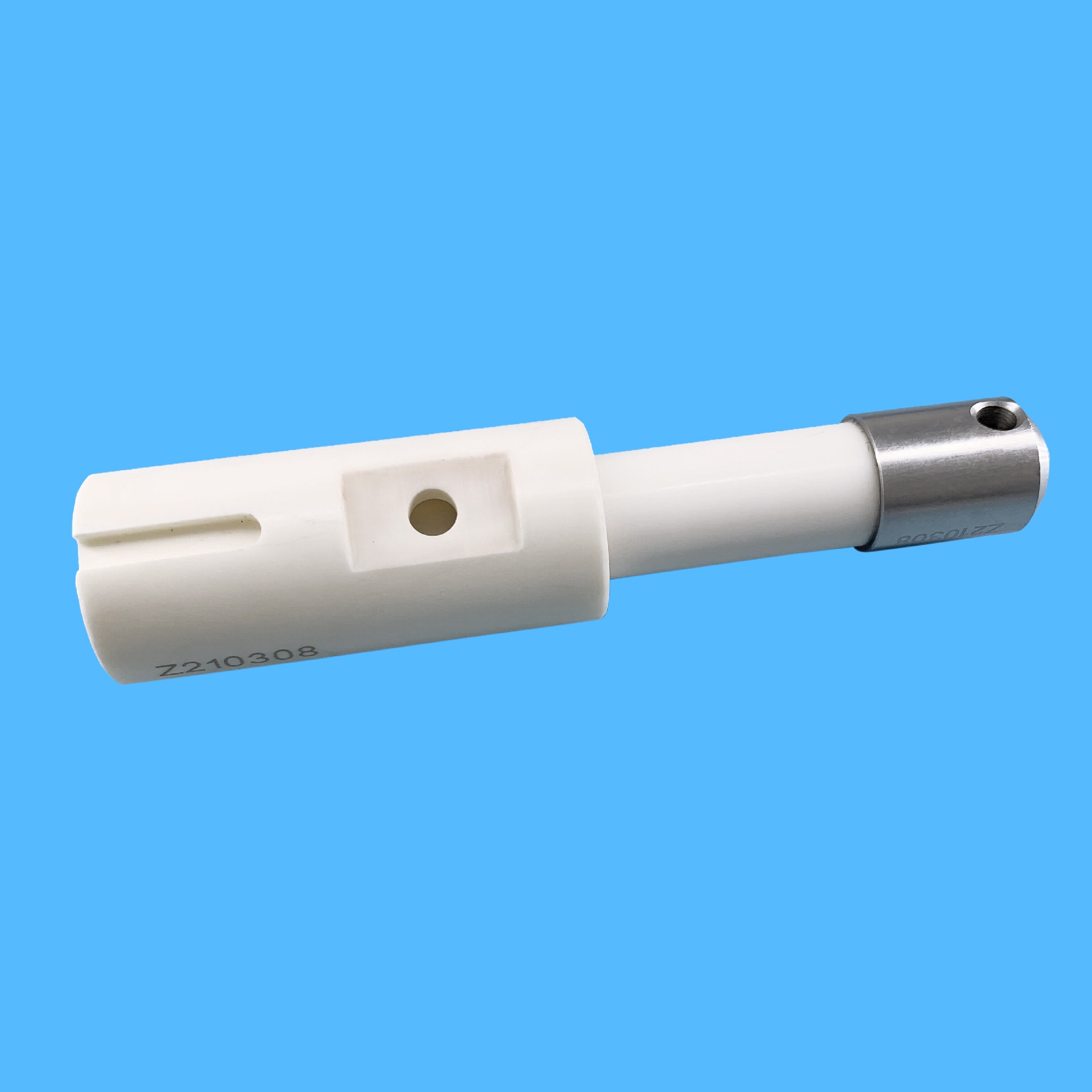Products
LATEST NEWS

Address:1st Floor, Zixiang Road, Pingshan District, Shenzhen, Guangdong Province
Zip Code: 518100
Phone: +86 13410681808
E-mail:glzmdy@163.com
Ceramic plunger pump
HOMECeramic plunger pump

Dialysis machine ceramic pump
Dialysis machine ceramic pump
The hemodialysis pump is a key component in medical equipment, used to control the flow of fluids during the dialysis process. Its and design must meet the strict standards of medical devices, ensuring the safety and effectiveness of the dialysis process.
The hemodialysis ceramic pump has the following features:
High-performance technical ceramic materials are used, which have high hardness, wear resistance, high-temperature resistance, and corrosion resistance. These properties ensure reliable material performance.
micro-porous structure obtained by a unique processing method on the plunger working surface has self-lubricating properties, which changes the mechanism of sliding friction and lubrication traditional plunger pumps.
The inner cavity surface adopts a fluid structure with no dead corners or grooves. The inner cavity surface and the plunger surface are machined to mirror finish using advanced high-precision internal and external grinding machines, and the outer surface is vibrating polished, which facilitates cleaning and disinfection.
The pump body uses 316L stainless steel with seals, making it easy to disassemble.
This type of product has undergone corrosion resistance and pH safety performance testing, and various indicators have reached the level of foreign similar products.
The appearance and dimensions can be designed and processed according to the user's needs.
Dialysis fluid ceramic pump_Dialysis ceramic pump_Blood dialysis ceramic pump model:
Model Piston diameter Liquid volume
JC-05 D4.76MM 0-0.4ML
JC-06 D6.35MM 0-0.7ML
JC-10 D9.94MM 0-1.2ML
Dialysate Ceramic Pump_Dialysis Ceramic Pump_Application of Hemodysis Ceramic Pump:
The hemodialysis machine is divided into two parts: the blood monitoring alarm system and the dialysate supply system. The blood monitoring alarm includes blood pump, heparin pump, arterial and venous pressure monitoring, and air monitoring, etc.; the dialysate supply system includes temperature control system, solution system, deaeration system, conductivity monitoring system, ultrafiltration monitoring, and bleeding monitoring, etc. Its working principle is: the dialysate concentrate and dialysis water mixed into qualified dialysate through the dialysate supply system, and then through the hemodialyzer, and the solute diffusion, osmosis, and ultratration are carried out with the patient's blood drawn from the blood monitoring alarm system; the treated patient's blood is returned to the patient's body through the blood monitoring system, and the dialysate used is discharged as waste liquid by the dialysate supply system; continuously circulating to complete the entire dialysis process.
Dialys Ceramic Pump_Dialysis Ceramic Pump_Hemodialysis Ceramic Pump, clinically refers to the removal of some waste in the blood through a semi-perable membrane. Hemodialysis is one of the safer, more convenient, and more widely used blood purification methods. Dialysis refers to the movement of solutes through semipermeable membrane from a high concentration solution to a low concentration solution. Hemodialysis includes the movement of solutes and water, that is, the blood and dialate are in contact with each other in the dialyzer (artificial kidney) through the semipermeable membrane and the concentration gradient to exchange substances, so that the metabolic and excessive electrolytes in the blood move to the dialysate, and the calcium ions, alkaline substances, etc. in the dialysate move to the blood. If mixture of albumin and urea is placed in the dialyzer, the urea in the tube will move towards the water outside the tube through the membrane holes of artificial kidney when the tube is soaked in water, and the albumin molecules are larger and cannot pass through the membrane holes. This phenomenon of substance movement in which small molecules can pass and large molecules cannot pass through a semipermeable membrane is called diffusion. The basic principle of hemodialysis in clinical practice is to use the diffusion phenomenon to separate purify the blood to achieve the purpose of purification.
The thickness of the semipermeable membrane used in hemodialysis is 10-20 mic, and the average diameter of the holes on the membrane is 3 nanometers, so only small molecules with a molecular weight of less than 15,000 and medium molecules can pass through, while molecules with a molecular weight greater than 35,000 cannot pass through. Therefore, proteins, pyrogens, viruses, bacteria and blood cells, etc., are not permeable; most of the components of urine are water, and if the artificial kidney is to replace the kidney, a large amount of must be excreted from the blood, and the artificial kidney can only use osmotic pressure and ultrafiltration pressure to achieve the purpose of removing excess water. The artificial kidney used, that is, the hemodialysis device, all have the above functions, so as to regulate the quality and quantity of the blood, so that it is close to physiological state.
Dialysate Ceramic Pump_Dialysis Ceramic Pump_Hemodialysis Ceramic Pump Hemodialysis
Hemialysis (Hemodialysis), abbreviated as hemodialysis, is also commonly known as artificial kidney, washing kidney, it is one of the blood pur techniques. It uses the principle of semipermeable membrane, through diffusion, to remove various harmful and excessive metabolites and excessive electrolytes in the human body, to achieve the of purifying the blood, and to absorb and correct the purpose of water and electrolyte and acid-base balance.
Peritoneal Dialysis
Peroneal dialysis uses the peritoneum as a semi-permeable membrane, using the action of gravity to introduce the。
Peritoneal dialysis
Peritoneal dialysis uses the peritoneum as a semimeable membrane, and the prepared dialysis solution is infused into the peritoneal cavity of the patient through a silicone tube under the action of gravity. In this way, is a concentration gradient difference of solute on both sides of the peritoneum, and the solute on the high concentration side moves to the low concentration side (diffusion water moves from the hypotonic side to the hypertonic side (osmosis). By constantly changing the dialysate in the abdominal cavity, the purpose of clearing metabolic, toxic substances, and correcting water and electrolyte imbalance in the body is achieved.
Disadvantages of peritoneal dialysis
1. Induce infection Since the special catheter for peritoneal dialysis needs to be connected to the dialysis bag during fluid exchange, there is a possibility of abdominal infection. Therefore, before any steps related to peritoneal dialysis treatment, hands should be thoroughly washed. The incidence of peritonitis has been significantly reduced.
2. Weight gain and triglycerides in the blood: Since the dialysis solution uses glucose to eliminate excess water, it is possible that some glucose is absorbed during dialysis, which may lead weight gain, increased triglycerides, and other lipids in the patient's blood. Therefore, appropriate exercise and reduced sugar intake are needed.
3. Excessive loss of protein: During the dialysis process, a small amount of protein and vitamins are lost, so they need to be supplemented from food. In addition to maintaining normal habits, you can consume more fish, meat, eggs, and milk, which are high-quality proteins, and the best source of vitamins is fruits and vegetables, which can replen the body's needs.
Development of Hemodialysis Ceramic Pumps:
The number of people undergoing dialysis in developing countries is relatively small but rapidly. Over the past decade, the growth rate of dialysis patients in China, India, Brazil, and other countries has reached more than 15%, far higher than 3%-5% level in Europe and the United States. Moreover, the proportion of end-stage renal patients receiving dialysis treatment in developing countries is only about 1%, far lower than the about 80% level in Europe and the United States. With the expansion of the medical insurance coverage and the improvement of the national income in developing, it is expected that the number of dialysis patients will continue to grow rapidly in a long period. The hemodialysis industry includes hemodialysis services and hemodysis equipment. From 2010 to 2011, the market size ratio of the two has always been maintained at 5.2:1. In2011, the global market size of hemodialysis services was about 58.8 billion US dollars, mainly concentrated in developed regions such as North America,, and Japan. Among them, European hemodialysis services are mainly public institutions, while the United States and Japan are mainly private operating institutions

